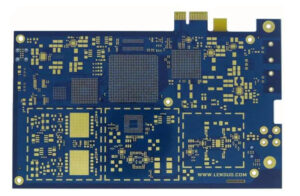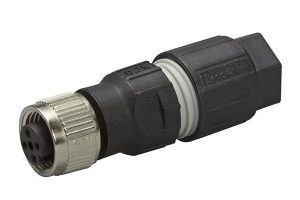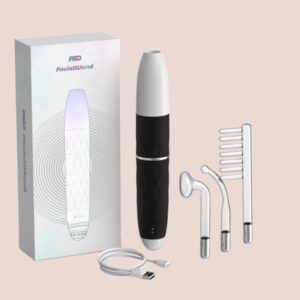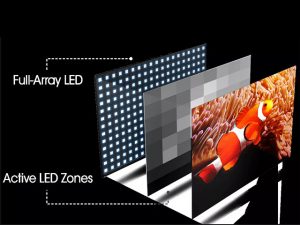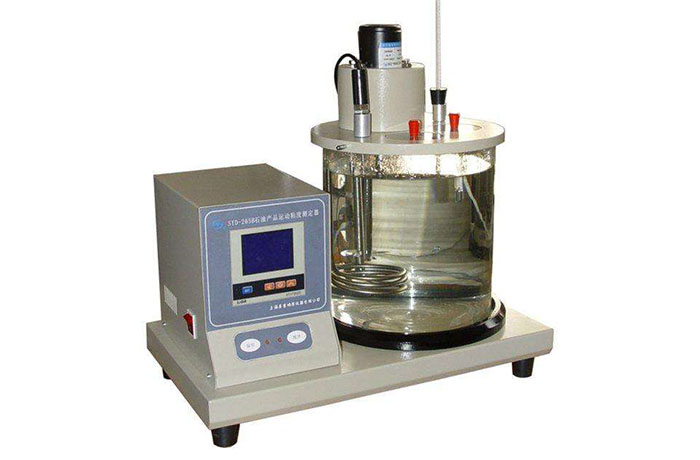
The difference between Ubbelohde viscometer, thermostatic water bath, single-cylinder and double-cylinder
There are high-precision and low-precision Ubbelohde constant temperature water baths. Low precision constant temperature water baths can reach 0.1, while high precision constant temperature water baths can reach 0.01. The different levels of precision have a direct effect on the water bath.
Viscometers are divided into two types: single cylinder and double cylinder. A single cylinder can use two tubes to measure viscosity, while a double cylinder can use four tubes. There is a significant price difference.
Also, if the user tests in a low-temperature environment, it is best to use a cooling tank, which will enhance the effect.
Ubbelohde vs. Oxygen viscometer
1) Different principle
Viscometer Ubbelohde: Under external force, fluid layers experience tangential internal friction. Part of the work must be done to overcome the liquid’s flow resistance in the tube.
Austenitic viscometer: U-shaped glass tube with two bulbs and a capillary tube below. Two equal-volume liquids flow through the same capillary under bubble I. Because of the varying viscosity coefficients, the flow times are different.
2) Benefits
The Ubbelohde viscometer is simple, easy to use, and accurate. The viscosity average molar mass is the result.
Ostrich viscometer: easy to create, easy to use, and accurate for measuring tiny viscosity liquids like water, fuel, alcohol, plasma, or serum.
3) Precision
Ubbelohde’s viscometer contains an extra tube. Since the Ubbelohde viscometer has a tube 1, the liquid in tube 3 is kept separate from the liquid in tube 2 while it is being measured. This makes a suspension column with air in it.
The pressure differential ρgh as the liquid flows down has nothing to do with the liquid level in pipe 2. Hence, the liquid can be diluted in the viscometer.
How to choose an automatic Ubbelohde viscometer?
1) Measuring range
Automatic Ubbelohde viscometers have varying ranges. When buying a fully automatic Ubbelohde viscometer, users can choose the sample viscosity.
2) Sample size
Low-viscosity samples are larger than high-viscosity samples. 200ml-450ml is required. If the sample amount is modest, consider the automatic Ubbelohde with a small sample adaptor.
3) Auto-scan
For samples with unknown viscosity or a higher level of automation, you might want to buy the automatic scanning feature.
4) Speed
Viscometers have varying rotational speeds (divided into 4, 8, 9, and 18 gears). The fourth gear is 6, 12, 30, 60 rpm; the eighth gear is 0.3, 0.6, 1.5, 3, 6, 12, 30, 60 rpm; the ninth gear is 0.1, 0.3, 0.6, 1.5, 3, 6, 12, 30, 60 rpm; and the 18th gear is 0.5, 1, 2, 2.5, 4, 5, 10, 20, 50, 100 rpm. 8th and 18th gears can exceed 2 million (NDJ-8S, SNB-1, DV-1), but if the number of gears is small, the measurement range given to each gear is wide, and the relative inaccuracy of measurement is also considerable.
Varied rotational speeds and non-passing rotors cause different shear rates. At the Automatic Ubbelohde viscometer, viscosity varies with shear rate for non-Newtonian liquids. More rotation speed gears provide more shear rate and more sample data.
5) Shear rate/shear stress
Shear rate and shear stress are very useful for fully automated Ubbelohde viscometer users to fully analyze the rheological properties of the sample.
How to use Ubbelohde viscometer?
Steps:
1) Adjust the temperature of the thermostatic bath to 25±0.05°C or 30±0.05°C according to the experimental needs.
2) Prepare the polymer solution
When measuring polymer molecular weight by viscosity, the constants k and α must be known, and the solvent should be stable, easy to produce, easy to purify, less volatile, and less toxic. Concentration is 0.001g/ml to 0.01g/ml to control hr between 1.2 and 2.0 during measurement. A few days before the measurement, dissolve the polymer sample in a solvent to make a known-concentration solution.
Weigh 100-500mg of the polymer to be tested and place it in a 100 ml clean and dry volumetric flask. Add 80ml of toluene to dissolve it. After dissolving the polymer, put thermostat that holds the volumetric flask. Add solvent to the mark, remove and shake well, filter with a No. 3 glass sand core funnel into another 100ml volumetric flask, and store in a constant temperature bath. The glass sand core funnel should be rinsed with sulfuric acid containing 30% sodium nitrate, filtered, and dried.
3) Clean the viscometer
A clean viscometer and test liquid are important to the success of an experiment. Dust and contaminants in the solution readily block the capillary viscometer’s narrow inner diameter. Once the capillary tube is clogged, the time it takes for the solution to pass across marking lines (a) and (b) cannot be recorded precisely, causing the experiment to fail.
Soak a new viscometer in cleaner, then wash it three times with tap water and three times with distilled water. Pour toluene into the used viscometer to wash and remove any remaining polymer. After cleaning, pour the toluene solution into the recovery bottle, and then wash the viscometer with lotion, tap water, and distilled water.
4) Measure solvent outflow time
The Ubbelohde is a dilatable suspension column viscometer. The clean viscometer is vertically clamped in a constant temperature bath so the water surface is buried in the little ball m1. Inject 10ml of toluene into the tube’s e-ball, t0 was measured in a 25°C bath for 3 minutes. Pinch the mouth of the c tube to make it airtight, use the ear cleaning bulb in the b tube to inhale the solvent from the e bulb through the capillary tube and the m2 bulb into the m1 bulb, then loosen the ear washing bulb first, then loosen the c tube.
Open c-pipe. Now, liquid returns to the e-ball. The operator should concentrate, watch the lowering liquid level with level eyes, and use a timer to measure the time required for the liquid level to flow between the a-line and the b-line. Each measurement should differ by no more than 0.2 s. Take the three-times average of t0, the solvent outflow time. Sometimes the difference between two consecutive intervals is only 0.2 s, even though the data collected continuously goes up or down, showing that the solution system has not yet reached a state of equilibrium. The current data is unreliable. Continue measuring if the concentration isn’t uniform.
5) Determination of the outflow time
After measuring t0, pour toluene out of the viscometer and dry it. Using a clean pipette, move 8 ml of the solution to be tested that has been kept at a constant temperature into the viscometer (be careful not to put the solution dip on the tube wall). Keep the temperature constant for 3 minutes, and measure the outflow time t1 of the solution (concentration c1) according to the previous steps.
(b) Using a pipette, dilute the aforementioned solution with 4ml of pre-constant toluene. The diluted solution concentration (c2) is the same. Add toluene 4 ml at a time, so the solution concentration reaches the initial concentration. After recording the outflow time, mix thoroughly, adding each pure reagent. After each dilution, the e-ball, capillary, m2 ball, and m1 ball of the viscometer should be rinsed with the diluent so that the solution concentrations are equivalent.
6) Washing the viscometer
After measuring, remove the viscometer, pour the solution into the recovery container, and fill it with hot washing liquid. The washing liquid is emptied out after soaking.
FAQ:
What is the role of tube A, tube B and tube C in the Ubbelohde viscometer?
A tube holds the liquid. Pipe B is the main part that is used for the flow to measure the flow time of the directional distance. The C pipe connects the air, so that the liquid in the B pipe suspends, which decreases the turbulence and allows the liquid to flow freely along the wall, resulting in higher accuracy.
When the fluid flows under the action of external force, there is a tangential internal friction force between the flowing liquid layers. If the liquid passes through the tube, a part of the work must be expended to overcome the resistance of this flow. When the flow rate is low, the liquid in the tube advances along a straight line parallel to the tube wall. The liquid closest to the tube wall is actually stationary. The farther it is from the tube wall, the greater the flow speed. The tangential force f between the flow layers and the contact area A and velocity difference between the two layers
Δv is proportional to and inversely proportional to the distance Δx between the two layers:
In the formula, η is the proportionality coefficient, which is called the viscosity coefficient of the liquid, or viscosity for short.
The molar mass of a polymer not only reflects the size of the polymer molecule, but also is directly related to its physical properties, and is an important basic parameter. Different from general inorganic substances or low-molecular organic substances, polymers are mostly mixtures of macromolecules with different molar masses, so the measured molar mass of polymers is usually a statistical average.
Ubbelohde viscometer vs. capillary viscometer
Ubbelohde viscometer is a capillary viscometer. There are many kinds of capillary viscometers and Ubbelohde viscometer is one of them. Capillary viscometer also includes Pinner viscometer, also known as flat glass capillary viscometer, Austende viscometer, Dilution type Ubbelohde viscometer, countercurrent viscometer Sy type, vacuum capillary viscometer, etc.
